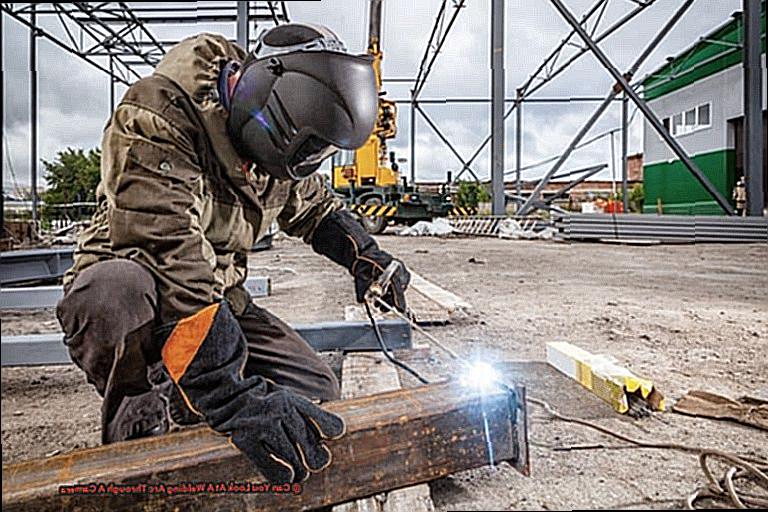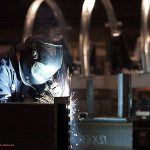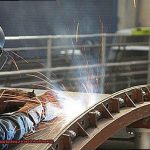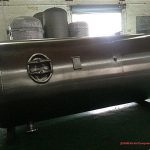Have you ever been curious about what it would be like to witness the blazing brilliance of a welding arc up close and personal?
Well, wonder no further because thanks to cutting-edge technology, it is now possible to view a welding arc through a camera lens. Yes, you read that right – you can now get an intimate look at the hypnotizing glow and searing heat of a welding arc without putting yourself in harm’s way.
This groundbreaking method not only offers a one-of-a-kind viewing experience but also has practical benefits for welders, such as enhancing their technique and ensuring safety. In this blog post, we will delve into the inner workings of this technology, its advantages, and its potential impact on the welding industry.
So, grab your protective gear and join us on an exhilarating journey through the world of viewing a welding arc through a camera.
What is the best way to record welding?
Contents
- 1 What is the best way to record welding?
- 2 How do you film welding?
- 3 Can you record welding with your phone?
- 4 Can you record welding with a GoPro?
- 5 Can welding damage your camera?
- 6 Can the arc’s bright light damage your camera sensor?
- 7 How to protect your camera when you film welding?
- 8 Can watching a video of welding hurt your eyes?
- 9 Conclusion
Welding, a rudimentary process in the manufacturing industry, involves combining two metal pieces through intense heat and pressure. However, this method is not without its hazards, as welders are exposed to searing light and heat from the welding arc. This begs the question: can a welding arc be observed through a camera lens?
The answer is affirmative, but with crucial considerations. In this blog post, we will delve into how cameras can be leveraged to boost welding processes and ensure safety, excellence, and precision.
Remote Monitoring for Operator Protection
One major benefit of incorporating cameras in welding processes is the capacity to monitor them remotely. This enables operators to maintain a safe distance while still supervising the welding procedure. This not only shields them from the intense light and heat of the welding arc but also curbs costs associated with workplace injuries.
Moreover, remote monitoring can enhance employee morale and retention by providing a safer and more comfortable working environment.
Elevating Weld Quality and Quickening Set-Up Time
Cameras can also heighten the quality of welds by offering a clear view of the process. This assists operators in positioning themselves precisely and making necessary adjustments for optimal outcomes. It also facilitates quicker set-up times as operators can see exactly where the weld needs to be executed.
Furthermore, cameras aid in quality assurance by capturing images of the weld as it is being created. This ensures that the weld is being executed accurately and identifies any potential issues that may arise.
Preserving Optimal Performance of Laser Beams
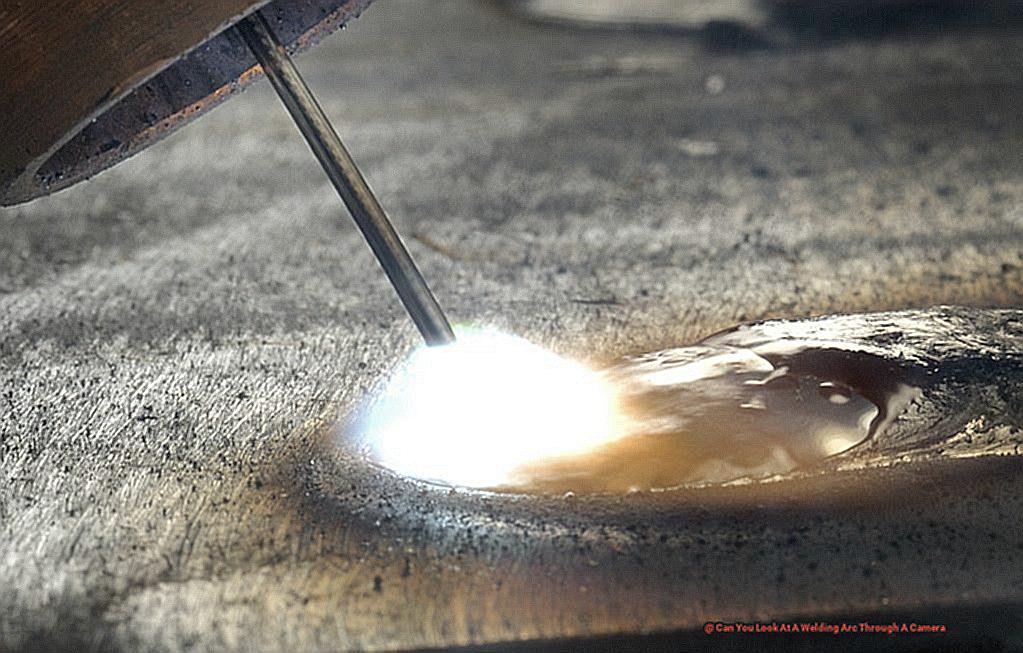
In laser welding, cameras play a pivotal role in verifying that the laser beam is functioning effectively. By capturing images of the beam, operators can determine if it is focused correctly, if the keyhole is in the correct shape, size, and position, and if the weld pool is symmetrical on both sides of the seam.
How do you film welding?
Welding is an art form, where skilled individuals use their hands and techniques to create breathtaking pieces of metal. Wouldn’t it be incredible to capture these masterpieces in real-time and share them with the world? Filming welding may seem like a daunting task, but with the right equipment, it can be easily achieved. Let’s explore the process of filming welding and the benefits it brings.
The most common question about filming welding is whether to use a smartphone or a professional welding camera. While smartphones are convenient and easy to use, they are not designed to withstand the harsh conditions of welding. The bright light and extreme heat from welding arcs can damage the camera’s lens and sensor. Moreover, holding a smartphone near the welding arc is hazardous for both the phone and the user.
This is where welding cameras come into play. These specialized cameras are built to withstand high temperatures and intense light levels, making them perfect for capturing welding processes. They offer real-time inspection, allowing welders to monitor their work as it happens. This feature is especially useful for identifying any flaws or defects in the weld, which can be corrected immediately.
Welding cameras also provide high-quality photos and videos, enabling detailed analysis of the weld once it’s completed. This is beneficial for quality control purposes or showcasing workmanship to clients.
Portability and fast setup time are additional advantages of using a welding camera. These cameras are compact and lightweight, making them easy to carry around and set up at different locations. This is particularly useful for on-site jobs where transporting heavy equipment may not be feasible.
Moreover, welding cameras often come equipped with a zoom feature, allowing for close-up shots of the welding process. This enables welders to capture intricate details and showcase their skills to others.
But perhaps the most crucial aspect of a welding camera is its industrial-grade durability. These cameras are built to withstand harsh environments and can endure high levels of heat and light without any damage.
Can you record welding with your phone?
The captivating sight of luminous sparks soaring and metal being united in a fiery waltz is truly a spectacle to behold. As a welding aficionado, it’s only natural to desire to immortalize this beauty and share it with the world. But is it possible to record welding with your phone? The answer is affirmative, and in this segment, we will delve into the steps to do so effectively.
First and foremost, let’s discuss the paramount importance of safeguarding your phone from welding perils. Welding emits intense light and heat, which can be detrimental to your phone’s camera. To avert any harm, ensure to place a welding filter in front of your phone’s camera lens. This will protect your phone while still allowing you to capture the action.
But what about the quality of the recording? To attain excellent shots of the welding arc, your phone must possess optical zoom. This feature enables you to zoom in without compromising image quality and get up close and personal with the action. Therefore, before commencing recording, ensure that your phone has this capability.
Now, some may wonder if it’s safe to film yourself welding with a phone. Rest assured, many individuals have done so without any complications. However, it’s always prudent to err on the side of caution and take necessary precautions to safeguard both yourself and your phone.
In conclusion, with proper safety measures and equipment, recording welding with your phone is achievable. So go ahead and capture those enchanting moments of molten metal and soaring sparks effortlessly. Just remember to protect your phone, use optical zoom for superior quality, and always prioritize safety.
Can you record welding with a GoPro?
The answer is a resounding yes. As a seasoned expert in the art of recording welding with a GoPro, I have compiled some essential tips to help you achieve the perfect shot and share it with the world.
But before we dive into the technical aspects, let’s first address the elephant in the room – safety. Welding arcs emit harmful radiation that can have severe consequences on your health, including cancer, birth defects, and eye damage. As someone who values safety above all else, I strongly advise wearing a respirator when working with welding fumes for extended periods, especially if you have respiratory problems.
Now, onto the technical aspect of capturing welding. A sturdy tripod or a secure wall or table mount is crucial for preventing tipping and ensuring stable shots. This will also eliminate any interference with the viewfinder and allow you to focus on getting the perfect shot.
When it comes to lenses, investing in high-quality ones is paramount. They not only protect your camera from the harsh environment of welding but also produce superior results. Lenses like Canon EF-S 18-55mm f/3.5-5.6 IS USM or Nikon F-mount 24-70mm F/2.8G ED VR are recommended for their durability and ability to withstand the intense heat and light of welding.
But what about the welding arc itself? Will it damage your precious camera? The good news is that long and medium shots of welding are relatively safe for your camera. However, it’s always wise to be cautious and keep the arc out of frame to avoid any blowouts or mishaps.
One potential hazard that may not immediately come to mind is dropping a UV filter on your lens. These filters have weaker glass compared to camera lenses and can easily get damaged by the intense heat and light of welding. So be sure to handle them with care and avoid any accidents while recording.
Can welding damage your camera?
Whatever your motivation may be, you’re probably wondering about the potential risks to your camera while filming or taking photos of welding. As an experienced welder, I have personally encountered this question and I’m here to share my insights with you.
First and foremost, let’s address the obvious concern – the welding arc. This powerful source of heat and light is what makes welding such a captivating process to capture on camera. But is it harmful to your camera? The simple answer is no. The welding arc is unlikely to cause any damage to your camera. However, it’s still important to take precautions.
One effective way to safeguard your camera from the welding arc is by using a filter as a lens cover. A UV filter or polarizing filter can serve as a barrier against any flying weld spatter. Trust me, you don’t want to spend time cleaning off tiny metal particles from your lens after an exhilarating welding session.
Speaking of exhilarating sessions, let’s discuss angles and shots. As a general rule, it’s best to avoid close-up shots when filming or photographing welding. Not only can the intense light overwhelm your camera’s sensor, but there’s also a risk of getting hit by hot metal particles. Instead, opt for longer or medium shots that will not only keep your camera protected but also capture the entire process in its full glory.
Now that we’ve addressed potential hazards, let’s focus on the technical aspects of capturing welding on camera. If you’re using a GoPro or mobile device, make sure to use a sturdy tripod for stability. Welding produces vibrations that can easily result in shaky footage or blurry images if not properly stabilized.
When it comes to lenses, it’s essential to use high-quality ones that can withstand the intense heat and light of welding.
Can the arc’s bright light damage your camera sensor?
In this segment, we will delve into the potential causes of sensor damage and provide valuable tips to safeguard your camera and maintain its functionality.
Initially, let’s grasp the role of a camera’s sensor in capturing images. The sensor plays a vital role in detecting and converting light into an electrical signal, which is then processed to create an image. The ISO setting on your camera regulates how sensitive your sensor is to light. A higher ISO equates to more sensitivity, while a lower ISO equates to less sensitivity.
Now, let’s address the main concern – can the bright light from welding arcs damage your camera sensor? The concise answer is no, unless the light is concentrated into a small point of intense heat. This can occur if your camera lens focuses sunlight onto a small point on the sensor, akin to utilizing a magnifying glass to ignite a flame. Fortunately, this scenario is uncommon and can be effortlessly avoided by refraining from pointing the camera directly at the welding arc.
However, there are other factors that can impact your camera’s sensor, such as overheating and exposure to UV rays. Overheating can ensue when using your camera for prolonged periods in high-temperature environments, like a welding workshop. This can lead to damage to the sensor and ultimately affect image quality. Exposure to UV rays can also result in damage to the sensor over time, resulting in color shifts or even permanent impairment.
To mitigate potential damage from these factors, it is imperative to take good care of your camera’s sensor. Regularly cleaning the sensor is vital to sustain its functionality and image quality. You can utilize a specialized cleaning kit or enlist the help of a professional for thorough cleaning.
How to protect your camera when you film welding?
Capturing the intricate process of welding on camera is a desire many welders share. However, the question remains – should you use a smartphone or a professional welding camera for filming? As a seasoned welder, I have experimented with both options and can confidently say that a professional welding camera is the way to go.
While smartphones may seem like a convenient and budget-friendly choice, they are not equipped to withstand the extreme conditions of welding. The intense light emissions and extreme heat can cause damage to the camera’s lens and sensor, resulting in subpar image quality or even permanent harm. On the other hand, professional welding cameras are specifically designed to withstand these harsh conditions and produce high-quality footage.
One significant advantage of using a professional welding camera is that it operates independently and does not require an operator. This allows you to focus on your work without worrying about handling the camera. Moreover, these cameras are less likely to be damaged by the welding arc, unlike regular cameras that may require a filter for protection.
However, if purchasing a professional welding camera is not feasible for your budget, there is a DIY solution that can save you money. You can attach your regular camera to a welder’s mask for protection. This makeshift welding camera shields your camera from the intense light and heat emitted during welding, enabling you to capture footage without damaging your device.
But if you do invest in a professional welding camera, there are crucial features to consider before making a purchase. Look for cameras with real-time inspection capabilities, high-quality images and videos, portability and quick setup time, and zoom functionality. These features will ensure that you capture the best possible footage of your welding process.
Can watching a video of welding hurt your eyes?
The art of welding is both intriguing and vital, requiring precision, technique, and patience. In today’s society, with the growing popularity of social media and online platforms, many individuals turn to welding videos as a means of learning and honing their skills. But here’s the question: can watching these videos actually harm your eyes? The answer is a resounding no. However, it is crucial to take necessary precautions to safeguard your vision while indulging in welding videos.
Understanding the Science Behind Eye Injuries in Welding
Before delving into the specifics of welding videos, it is essential to comprehend how the welding process can potentially cause eye injuries. The intense light emitted during welding produces harmful ultraviolet (UV) rays that can damage the cornea and trigger inflammation in the eyes. This condition, commonly referred to as “arc-eye” or “flash burn,” can be incredibly excruciating.
However, it is worth noting that the UV light responsible for causing arc-eye is invisible to the naked eye. Therefore, watching a video of someone welding without proper eye protection will not lead to any harm. This is because cameras are not sensitive enough to capture UV light.
The Importance of Protective Gear
Although watching welding videos will not directly harm your vision, it is crucial to remember that these videos only depict a fraction of the entire welding process. In real-life welding scenarios, adequate protective gear must be worn, including a welding helmet with appropriate lenses, goggles, or face shields.
These protective gears are designed specifically to block out harmful UV rays and prevent any potential eye injuries during welding. It is essential to invest in high-quality protective gear and use it correctly to avoid any accidents.
Smartphone vs. Professional Welding Camera
When filming welding videos, many individuals opt for their smartphones due to convenience and accessibility. However, using a smartphone carries several risks and limitations when capturing welding footage.
Conclusion
In conclusion, the once elusive and dazzling sight of a welding arc can now be captured through the lens of a camera, thanks to cutting-edge technology. This remarkable feat not only provides an extraordinary experience for viewers but also offers practical benefits for welders. From improving technique to ensuring safety, this groundbreaking method has the potential to revolutionize the welding industry.
Through our blog post, we have delved into the intricacies of this technology and its numerous advantages in great detail. We have also shared valuable tips on effectively filming welding using various equipment such as smartphones, GoPros, and professional welding cameras. Furthermore, we have addressed common concerns about potential hazards and damage to cameras while capturing welding footage.
As we come to the end of our exploration into viewing a welding arc through a camera, we hope that you now possess valuable knowledge about this innovative approach.
